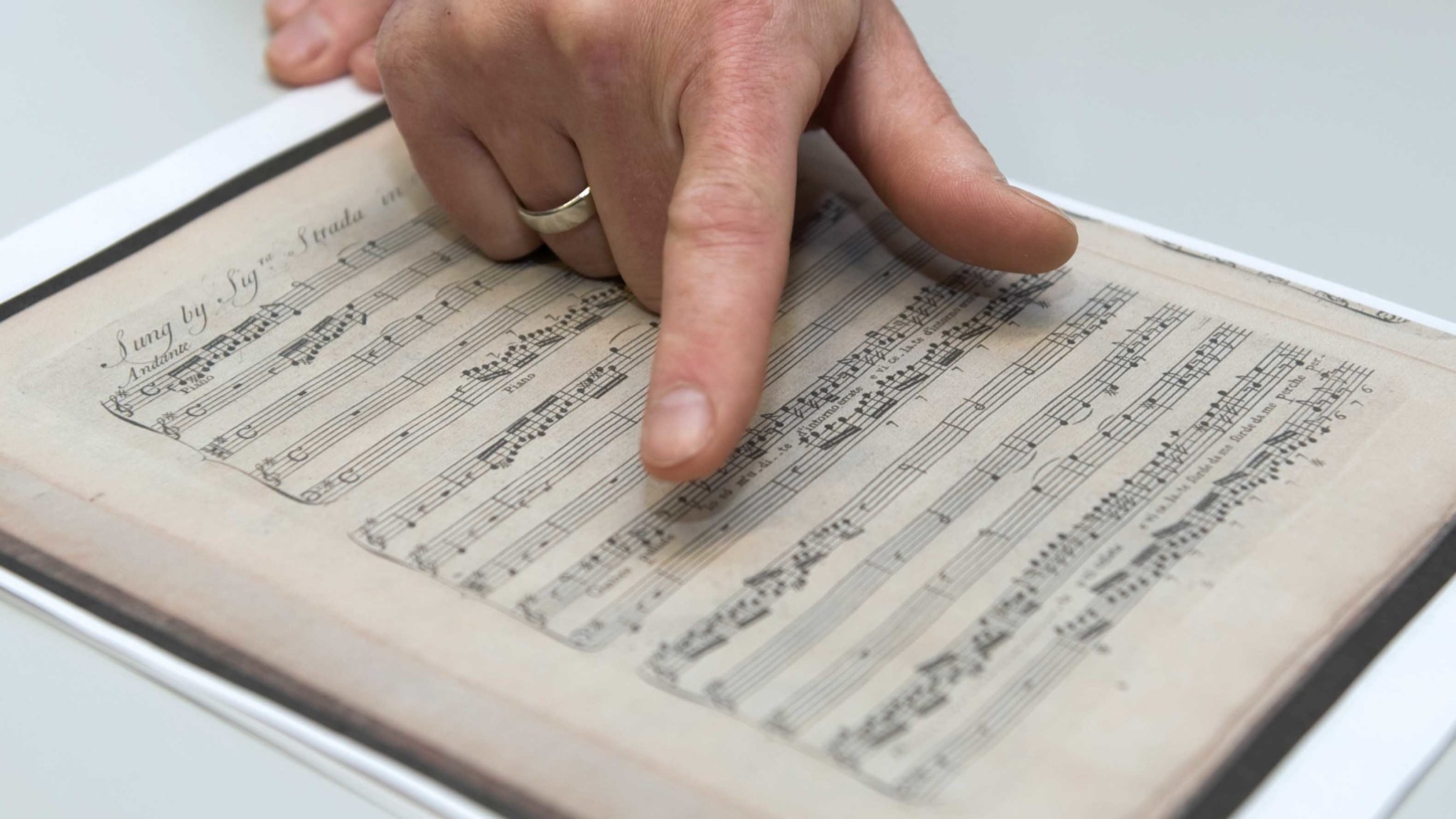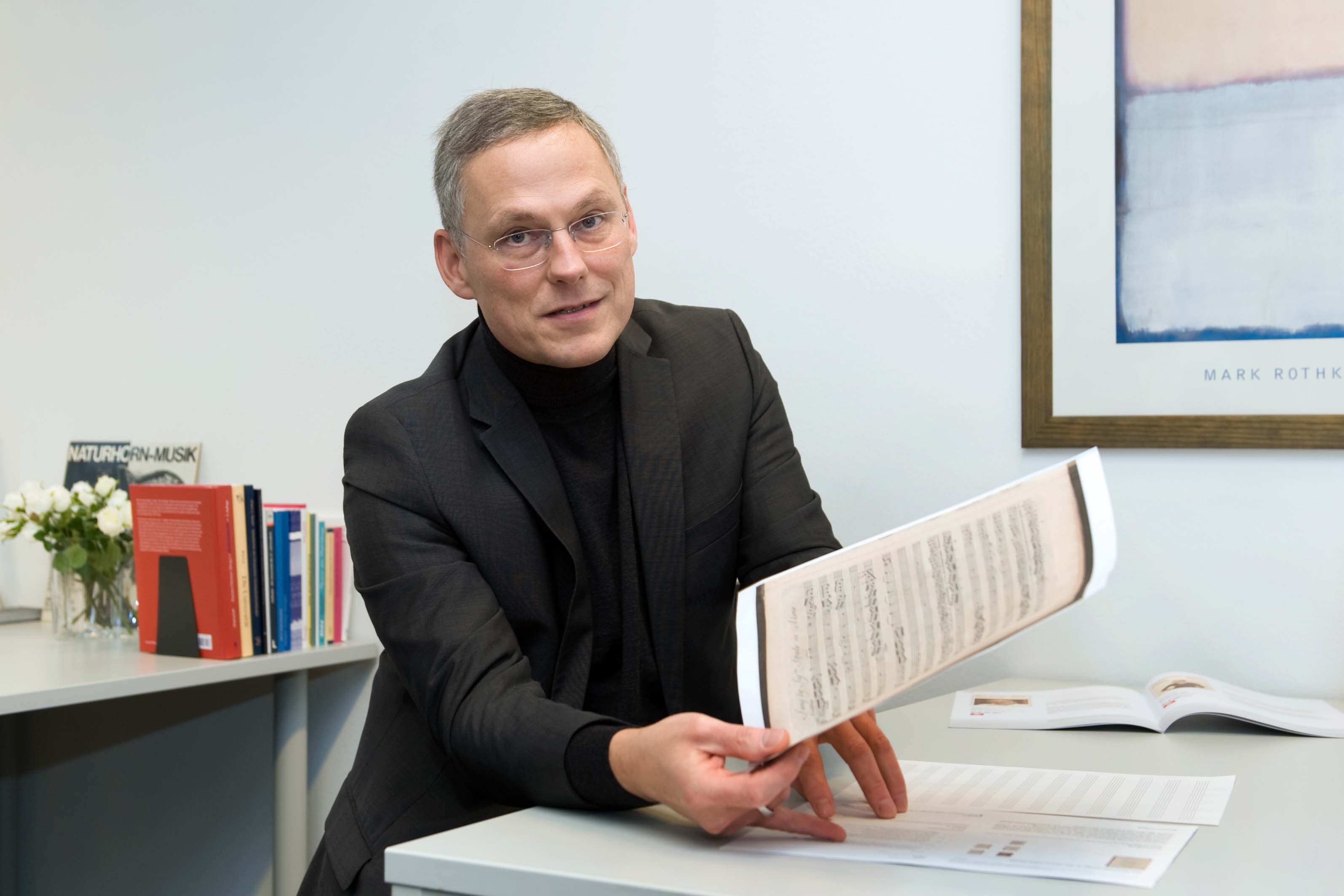
Photo: Harald Rehling
Explain This, Professor: Basso continuo
What, who, why? In the “Explain This, Professor” series, Bremen researchers reveal why some things are as they are. Today: Basso Continuo.
Recently, highly acclaimed performances of Alcina, Händel’s “dramma per musica”, took place at Theater Bremen. The baroque music is exhilarating, make’s one heart leap, and creates a brilliant atmosphere. How did Georg Friedrich Händel achieve this at the beginning of the 18th century? The basso continuo apparently plays a significant role. But what is basso continuo? A special instrument? An oversized double bass? Let’s go to the Institute for Music Science (Institut für Musikwissenschaft) on the fourth floor of GW2 and ask.
Professor Ulrich Tadday immediately plays the aria of desperation “Ombre Pallide” on his laptop so that we can listen. In “pale shadows” (bleiche Schatten), the sorceress Alcina laments her loss. She has fallen in love and lost her magical powers. The music fills the room and is close to turning the GW2 courtyard into a surreal scene. The music, according to Tadday, has a fixed structure. “The basso continuo, also called the thorough bass, forms the foundations on which the whole composition sits,” says the music scientist. “It is the part that creates the music in its entirety.” The baroque period is therefore also referred to as the “thorough bass era”.

Photo: Harald Rehling
Musical Shorthand
This can be seen nicely on the staff. 1. Violin, 2. Violin, viola, singer’s voice, and right at the bottom the harpsichord. “Do you notice anything?” asks the music scientist craftily. Actually, I do. There are only harpsichord notes for the left hand. Where are the ones for the right? When you look closer, you can see that there are numbers: 7, 6, 5. “That is musical shorthand,” says Professor Tadday. It’s the continual thorough bass. “It is only the shell structure.” It was down to the musicians of aristocratic courts and bourgeois families to embellish the bass with other parts using ornaments, melodies, and trills. “Much like putting meat on the bones.” The drafted composition had to be brought to life, according to the expert. When looking at the notes and numbers, this seems to be a simply impossible task for the unacquainted observer. Tadday explains that it was about adding flavor so that the DNA of the whole composition – the thorough bass – could unfold. “This musical thinking began around 1600 when the opera was invented,” he adds.
Structure for the Harmony
What was before and what followed? Once more, there’s a musical example. A 12th century motet. Polyphone music. “It sounds quite like new music,” says Professor Tadday. “No harmonizing of the parts, but each note against another, contrapuntal.” All voices in the piece are equal. The difference to thorough bass becomes clear. The homophone music, which emerged in the 16th century, is closely connected to the thorough bass in terms of expressiveness and gravity. The bass grounds the harmony. “In the times of Bach, the thorough bass celebrated its peak. This then declined in the second half of the 18th century,” says the expert. Haydn and Mozart no longer composed in such a manner. They articulated the individual parts in a stronger manner and weighted them differently.
Harpsichord or Lutes
So everything is clear now. Wait. Which instruments actually played the thorough bass? “Mainly the harpsichord,” says Professor Tadday. But sometimes also a lute, for example a theorbo, were used as a ‘supporting instrument’ for the thorough bass. The latter can be found in the Theater Bremen orchestra. The performance of Alcina is much more pleasing when you know a little about it. The opera will be showing at the Theater Bremen from January to March. Thank you, Professor Tadday.